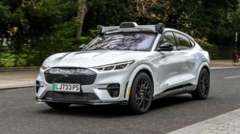Uber, the globally recognized ride-hailing service, is set to trial its robotaxi service in London next spring, venturing into the realm of fully autonomous vehicles that operate without a human safety driver. Partnering with UK-based artificial intelligence firm Wayve, Uber aims to bring this technology to city streets amidst a shifting regulatory landscape.
The UK government has altered its legislative framework, originally projected for a 2026 rollout of driverless technology, now revising it to allow for earlier deployment of small autonomous "bus and taxi-like" commercial services. While specifics regarding customer access to these driverless taxis during the trials remain unclear, Uber expressed intentions to integrate the option into its UK app following the finalization of new regulations.
With projections suggesting the autonomous vehicle industry could create around 38,000 jobs and contribute approximately £42 billion to the UK economy by 2035, the potential benefits are numerous. However, concerns persist regarding the significant social implications of such advancements, particularly concerning unemployment, as raised by GMB national secretary Andy Prendergast.
Uber has already launched a similar robotaxi service in Austin, Texas, and asserts that its driverless vehicles are capable of operating 20 hours a day, seven days a week. Customers there have the option to choose robotaxis with fares remaining consistent with standard rides. Other countries, including China, the UAE, and Singapore, have seen fully autonomous cars navigate public roads extensively, though ongoing investigations are analyzing their safety compared to traditional, human-driven vehicles.
Despite many studies indicating that automated vehicles are generally less prone to accidents, issues involving robotaxis have also surfaced, ranging from accidents to technical malfunctions. A noted incident led to the cancellation of one service in San Francisco.
Earlier this year, I experienced a ride in a Wayve-equipped vehicle in central London, which was piloted by a human safety driver but remained unactivated throughout the journey. The vehicle adeptly navigated complex urban obstacles, exhibiting more caution than a human driver may have. This reassuring experience highlights the potential of AI-powered systems in transforming the landscape of urban transportation, marking a significant step towards the reality of driverless taxis in the UK.






















